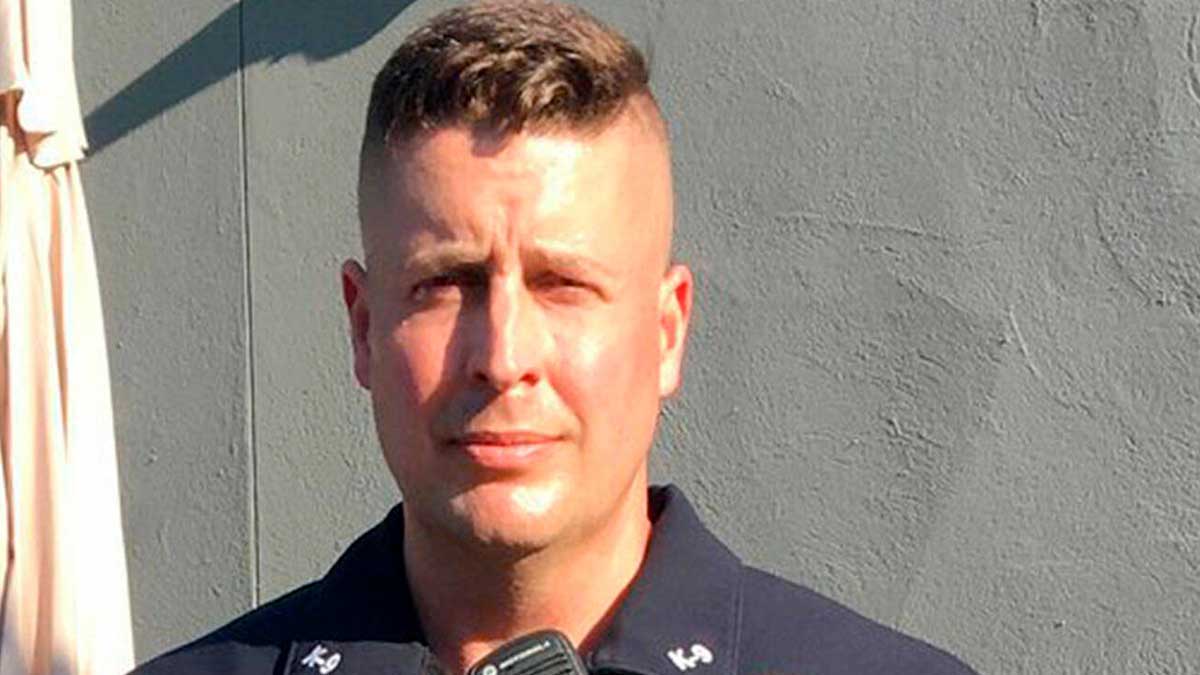[Kent, WA – WBHG News] – A King County Judge sentenced former Auburn police officer Jeffrey Nelson to almost 17 years in prison for the 2019 murder of Jesse Sarey.
Nelson was convicted in June 2024 for the in-the-line-of-duty shooting of Sarey and became the first police officer convicted under I-940. The 2018 law removed the “malice of heart” standard to charge police officers with negligent shootings.
During the sentencing hearing, Judge Nicole Phelps asked Nelson if he wanted to make a statement on his own behalf, which he declined. The judge handed down a 200 month sentence for second-degree murder and 123 months for first-degree assault, with the sentences to run concurrently – or 16 years and 8 months. The sentence aligned with the prosecutor’s recommendation.
In their sentencing recommendation, King County Special Prosecutor Patty Eakes wrote, “Doing so will reflect Nelson’s long history of violence towards the less powerful, the egregious nature of his conduct, his dishonesty, and the great damage he has caused in our community.”
Nelson’s defense attorney, Kristen Murray, argued that “Officer Nelson chose a career in law enforcement because he was driven by his sense of duty to others” and requested a sentence of 6.5 years.
During the hearing, Judge Phelps had to stop the proceedings and clear the courtroom after people watching on Zoom started holding up pornographic pictures. Nelson’s sentence had already been rendered when the online protest started.
Sarey was murdered on May 31, 2019, after Nelson responded to a disturbance call at an Auburn Walgreens and had a brief interaction with him. Sarey then crossed the street and was outside Sunshine Grocery in the middle of a mental health episode. A manager of a nearby Starbucks called 911, claiming that Sarey was “attempting to access cars” in the parking lot. That claim was never substantiated.
Nelson arrived at Sunshine Grocery and, according to his official statement about the incident, had “the intent to arrest Sarey for disorderly conduct.” The entire interaction lasted 67 seconds. Nelson tried to handcuff Sarey, but he resisted. Multiple videos show that Nelson punched Sarey seven times and tried to throw him to the ground. He then pushed him up against the wall of the store and shot him in the chest. Sarey fell to the ground and, according to the autopsy, was already mortally wounded from the bullet that shredded his liver.
Nelson tried to fire a second time, but the gun jammed. Surveillance videos show he cleared the round, looked briefly, and fired for a third time, shooting Sarey in the forehead. The time from the first to the third shot was under four seconds.
Because of where Nelson parked his police cruiser, the dashboard camera did not record the details of the incident, and Auburn police did not wear body cameras. The barking of his K9 dog drowned out most of the audio from Nelson’s microphone.
In the official police report from the Auburn Police Department, released on August 16, 2019, Nelson claimed that Sarey had tried to take his service weapon from him during the struggle, which is why he shot him. The surveillance videos in the area did not show a struggle for the gun.
Nelson was charged with murder and assault in August 2020 and, due to the COVID pandemic and legal procedures, repeatedly delayed his trial until June 2024. During that time, he continued to collect his salary and benefits from Auburn, almost $100,000 a year.
After his 2024 conviction, Nelson was supposed to be sentenced on July 16. His lawyers appealed and, by the end of the year, had exhausted all legal avenues.
In an 8-1/2 year span, Nelson killed three people in the line of duty, including Sarey. Law enforcement experts said that it is highly unusual for an officer to be involved in three on-duty shootings during an entire police career and that most officers will never draw their service weapon.
In 2011, he fatally shot Brain Scaman after pulling him over for a burnt-out headlight. Scaman, a Vietnam War veteran with a known mental health history, exited the car with a knife, refused to drop it, was was shot in the head. An inquest determined Nelson’s actions were justified.
In 2017, Nelson shot Isiah Obet in the torso and then the head after releasing his service dog on the suspect. Nelson claimed that Obet was acting erratically and was armed with a knife. While the Auburn Police Department claimed there was no wrongdoing, the city reached a civil settlement of $1.25 million with Obet’s family.
Since Nelson’s 2020 arraignment, the City of Auburn settled a $4 million civil rights claim with Sarey’s family and has paid out almost $2 million additional to settle other civil claims against Nelson and other officers.
